Picture the scene: You’re running on the track; you’re absolutely blasting your fitness goals. You move faster and faster. You’ve finally got the hang of it, you think. And then, the worst case scenario hits you like a ton of bricks. You stumble, you fall, and you come crashing to the ground. You’ve been injured and, sadly, it’s serious.
Sound familiar? If you’re tired of getting injured, read our handy guide on how to deal with some of the common gym injuries, get back on your feet once again, and prevent future incidents using injury prevention strategies.
What Are The Most Common Gym Injuries?
Before we go any further, it’s worth taking a moment to look at some of the most common gym injuries. Since exercise and workouts put extra strain and pressure on the body, the chances of you getting injured at some point are relatively high. Weight-lifting injuries and high impact sports injuries are among the most probable here. It is important to seek medical help immediately should you suffer from any injury. With that in mind, let’s take a moment to look at some of the common injuries that you may encounter.
1. Sprains

First of all, let’s deal with one of the most common gym injuries – the sprain. This ailment happens when you overstretch or tear the fibrous connective tissues, which connect bones to one another.[1] Usually, this takes the form of an ankle sprain, which is the result of landing on your foot in an awkward or uncomfortable position. However, it’s important to realize that a sprain can occur in other places of the body where there are joints and ligaments.
- Symptoms: Inflammation, a lack of movement, tenderness, bruising, swelling[2]
2. Strains

One of the other common gym injuries that you may come across is a strain. This particular injury occurs when you tear or overstretch the muscle or tendon.[3] The cause can be down to one sudden, sharp movement, or by repeatedly doing the same thing and putting excessive pressure on the area. You can either get an acute strain or a chronic one, depending on the impact that the injury has.
- Symptoms: Muscle spasms, cramping, weakness, immobility
3. Tears

As the name suggests, this injury is a tear of the ligament, muscle, or tendons. When fibrous tissue breaks or tears, it could take a seriously long time to heal again.[4] Medical experts recommend that you rest the injured part of your body for a matter of months when an ailment like this one happens. Needless to say, these types of injuries can often be particularly painful and will take you by surprise.
The most common course of action for treating tears is rest. You will need to lay off the body part for a specific period of time until your body has healed itself. However, on the other hand, in extreme cases like that of an anterior cruciate ligament tear, you may need to have surgery.
- Symptoms: Pain and inflammation
4. Dislocations

If you’re a fan of extreme sports or contact sports, here’s one of the most likely workout injuries you have to try and avoid. Dislocations can affect a range of joints in your body, but are most likely to impact your shoulder joint. The reason is that the ball of this particular joint sits in a very shallow socket.[5] That means that you can easily dislocate it when you move into a tricky position or suddenly fall on it.
When you’re playing a contact sport, such as football or hockey, the chances of this injury happening are quite high. One quick slip or fall could mean that the ball of your shoulder flings out of the socket. It is important that you don’t attempt to pop the shoulder back into its socket. While it may seem like the most logical (and fastest) course of action, doing so means that you will run the risk of injuring the area further or, in the worst-case scenario, causing permanent damage. Instead, you need to go to the emergency room and get the support you need.
Recovery for one of these workout injuries can often take a long period of around 12-16 weeks.[6] Treatments will vary from patient to patient. The care that you receive will depend largely on whether your tissues were torn and how deep the injury is. In some cases, patients will need to have bouts of physiotherapy to ensure that they regain full mobility here.
- Symptoms: Immediate extreme pain, inability to move joint, large lump or bulge around joint area[7]
5. Broken bones
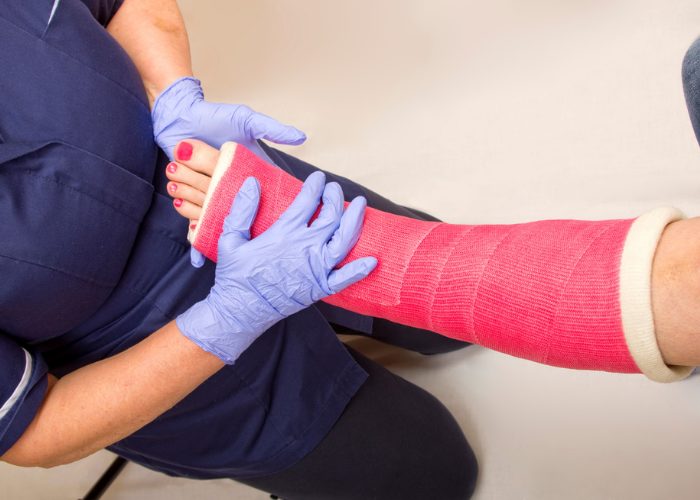
Finally, here’s one gym injury everybody is familiar with. A broken bone is just what it says on the tin – a tear, fracture, or full breakage of one of your bones. These ailments only happen in extreme cases, but it’s worth considering them. When you put too much pressure on your joints or bones, you may find that they yield under it.
Before you do anything else, you need to make sure that you get a thorough examination by a medical professional. You should also immediately take any weight off the affected area. Treatments can include casts, braces, and even surgery to help heal the broken bone as swiftly and easily as possible.[8] An injury of this severity will put your training regime to a stop. These ailments can take weeks or, in some cases, months to repair fully.
- Symptoms: swelling, severe pain, deformity[9]
Worried About Gym Injuries? Here are 7 Tips to Prevent Them
Are you a total gym junkie? If you love nothing more than the thrill of getting your sweat on, the topic of gym injuries is sure to trouble you. We all know that prevention is better than a cure. While there’s no failsafe way to ensure that they never occur, there are some straightforward tips you can try that will help. Here are seven science-backed ways which will teach you how to prevent injuries from happening.
Fact: Weight-lifting injuries are on the rise.[10] A study noted that a whopping 970,000 weight-lifting injuries were treated in US hospitals between 1990 and 2007. That showed an almost 50% increase in injuries over the course of the 18-year-long study.
1. Stretch before your workout

Do you stretch before you work out? Failing to do this simple ritual before you get active could be more dangerous than most of us imagine. Stretching can help to warm up your muscles and increase flexibility.[11] In turn, that means that you get a broader range of motion when it comes to your exercises. In short, you can be more flexible and literally do more activities during your workout, thanks to a quick stretch beforehand.
Both weight-lifting injuries and ailments caused by running or aerobic exercise could be prevented by adding some stretching to your routine. Of course, there are different types of stretching that you may wish to try. Static stretching is the most common; a practice in which you move your limbs into a position that causes mild discomfort to your body. When you’ve done that, you hold the stance for around 30 seconds at a time.[12]
Other stretching techniques include proprioceptive neuromuscular facilitation (PNF), in which you contract and release the muscles while in a stance, and dynamic stretching, in which you do gentle yet repetitive movements. Which you do depends largely on the type of exercise you plan on undertaking. If in doubt, you should talk to a fitness instructor for some advice.
Experts believe that regularly stretching out your muscles can help to boost your levels of flexibility and ensure that your movement is fluid.[13] That, in turn, should mean that you’re less likely to have serious gym injuries when you’re working out. Weight-lifting injuries are some of the most common, and so stretching before you hit the barbell is absolutely essential.
2. Vary the workouts that you do

Have you had one too many “legs days” recently? Be honest. While you may wish to focus on a problem area of your body, not varying your workouts is a recipe for disaster. For example, if you train using the same routine five days a week, you’re certain to overdo it. You might always weight train using the leg press. However, soon enough, you will find that the muscles in your leg start to crumble under all of that strain.
It’s not a huge surprise that this is how most weight training injuries occur. When we talk about how to prevent injuries, a point that you mustn’t overlook is that you should vary your workouts. That means focusing on different areas of your body each day or each time you hit the gym. Keeping a gym journal will help you do just that. You can note down the exercises you do during each session and which muscle groups they target. Try to avoid routines that constantly target the same area of your physique again and again.
This method will not only help you to avoid workout injuries, but it also means that you will get a full body workout on a weekly basis. You should also throw some injury prevention exercises into your routines. That way, you can be certain that you’re doing all you can to keep your body protected from ailments, injuries, and any other problems.
3. Stay as fit and healthy as possible

Many gym injuries happen when you’re not fighting fit. When your body is not in the best condition – as a result of poor diet and lifestyle – you will notice a tangible difference the moment you become active. Research from the Center for Advancing Health suggests that a lack of overall physical fitness can lead to higher injury rates among women.[14]
So, how can you make sure that you’re fit and healthy enough to work out? Making small lifestyle changes is the answer. Ensuring that you lead an active lifestyle, by walking to work and keeping busy, could be all that it takes. You should also make sure that you eat well, get the rest that you need, and look after your health. It’s all about making interventions that will make a huge difference when you start doing them regularly.
4. Give your body the right fuel

Your body is a machine. You need to give it the right fuel before, during, and after your workout. There’s been a whole body of research into why nutrition is crucial for your training regime. For example, one study published in Frontiers in Physiology found that eating a diet rich in leafy green vegetables, such as spinach and kale, could help your body to function during exercise.[15] The results of the research suggested that adopting this particular type of diet could help to boost sports performance.
Of course, eating your greens is merely one way in which you can make sure that your body has what it needs to stay active. You should also make sure that you consume healthy food and try to stick to a balanced diet rich in healthy protein, fats, and carbs. Hydration is also key when it comes to getting your body moving. When you work out, you tend to sweat and lose a whole load of your fluids. Drinking some water to stay hydrated is a huge help.
You may be wondering what nutrition has to do with gym injuries. Well, it’s quite simple. When your body lacks the food that it needs to keep moving and working out, you will find that you end up fatiguing faster than usual. That could mean that you hurt or injure yourself during your training routine. On the other hand, eating too much can also be consequential to your health.
As such, having a decent level of nutrition is the baseline when it comes to leading an active and healthy lifestyle. Once you get this part of your everyday life right, you can start to build upon it and reach new health and wellness heights.
5. Watch out for warning signs

Are you overtraining and putting yourself at risk when it comes to common gym injuries? Believe it or not, your body has small, simple ways to let you know that something is wrong. Information from Harvard Medical School suggests that some of the most common signs include sickness and tiredness.[16] If you feel excessively fatigued after a particular workout, you may well want to question why that is. It could be time to cut back in some areas.
When you’re feeling tired and drowsy, it’s only natural that you make some minor mistakes in your training routine. For example, you may find that your posture is off or that you twist in the wrong direction. These issues could mean that your injury risk skyrockets. Your joints should not ache or hurt as a direct consequence of your workout. The moment that you notice this serious red flag, you absolutely need to stop what you’re doing and try a different exercise.
6. Give yourself time to recover

You may have heard about rest days before now, but do you fully understand why they’re important? If you don’t give your muscles the right amount of time to recover between sessions, you could well find that they fatigue faster than they otherwise would. To cut a long story short, this means that you will ultimately end up overtraining which could again result in a whole array of potential gym injuries coming your way.
You should allow at least one to two days of rest (i.e. no high impact training) per week. While that may seem a lot, you should understand that this method is essential to your overall recovery. Research published in Frontiers found that this is particularly true should you practice Crossfit exercise.[17] The study found that doing too much consecutive exercise of this nature could hinder your immune system by affecting inflammatory proteins.
7. Seek expert fitness advice
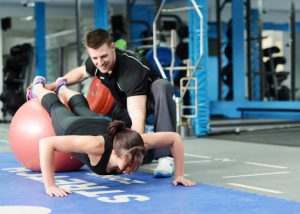
Form, precision, and safety – these three things have to come first whenever you’re doing any form of exercise or activity. If you’re unsure of the correct way in which to do a particular exercise, you absolutely have to ask a trainer or expert in the field. One report from Harvard Medical School lists this as one of the top ways in which to ensure that you’re taking measures to avoid gym injuries.[18] You should never “wing it” and hope for the best as you could well risk hindering your health or injuring your body in a serious way.
Of course, one way in which you can avoid this issue is to hire a personal trainer. However, doing so may prove costly. If you’re trying to save some cash on your fitness, simply ask one of the professionals at your gym. They should have an obligation to show you how to safely use each machine so that you prevent injuries. You may already have had an introductory tour of the gym when you first joined, but it’s always smart to get a quick refresh now and then.
How To Treat Gym Injuries For a Fast Recovery
Time is of the essence when you first get injured. With most gym injuries, you will need to go through the same process to help speed up your recovery. Note that you do need to make sure that see a doctor as soon as possible after you have had any form of accident! They will give you specific information about how you need to recover. As a general rule, the National Institute of Health recommends following the Rest Ice Compression Elevation (RICE) procedure for most injuries.[19] Here’s what you need to know about how to get it right.
Rest

Whether you’ve sustained a sprain, strain, or tear, the first thing that you need to do is rest the area. Putting any unnecessary amount of weight on the joint will only make it worse over time. Your doctor will be able to advise you on how long you should rest the affected area. You will need to decrease the amount of activity you undertake on a day to day basis and try to put less pressure on the injured part of your body. You may find that this rest period has to last for a matter of weeks or even months.
Ice

Whenever you have an injury, there is a high likelihood of swelling. The next step in the RICE process is using ice to cool down the area. You can use a cold bag, ice pack, or a plastic bag (or towel) which you have filled with ice for this step. You should hold the cool item on the affected area for around 20 minutes at a time. You can repeat this process between four and eight times each day. You should find that it gives you fast relief from the pain and swelling.
Compression
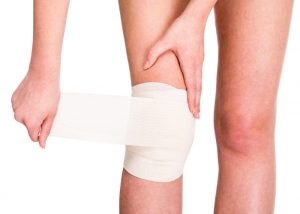
While we’re on the topic of swelling, here’s another step that will help you combat most gym injuries. Compression is a means of taking down the swelling and controlling it. All you need to do to get this right is to apply some light pressure to the area. For instance, if your ankle is swollen, you may use a bandage to wrap it. After you do this simple trick, you should notice that the swelling goes down.
Elevation

The key here is to raise the injured area above your heart. If you’re lying down on the sofa and your ankle is swollen, you could place a pillow under your foot to ensure that it is elevated. It’s a simple way to ensure that you slow down the blood-flow toward the injury. This will also help to stop the swelling and means that you may recover faster than you would.
While the basic RICE procedure may work for most minor gym injuries, there are cases in which more care and attention is warranted. In more serious workout injuries, you may find that your doctor recommends rehabilitation therapy, surgery, and taking nonsteroidal anti-inflammatory drugs.[20] If you want to recover fast, you should listen to your doctor and see what advice and support they have to offer you along the way.
Tip: If you have sustained an injury and would like to continue working out, it’s always best to speak to a medical professional. They will give you guidance about what activities you can undertake, the best injury prevention exercises, and more.
Shoulder Injury Workout

If you’ve hurt your shoulder during training, you might think that there are not many workouts you can actually do. That is not the case. This shoulder injury workout routine combines both flexibility and strength-training exercises to get you started. Do seek professional advice before starting a new exercise routine.
Cross-Arm Stretch
- Repetitions: 1 set (10 per set)
- Time: 5 minutes
How to do it
For this exercise, you will need to stand up straight and relax your shoulders slightly. Then, with one arm pull the other arm across the front of your chest. (Don’t put too much pressure on the arm at all! You don’t want to risk another injury!) Hold the arm in place for around 20-30 seconds and release. Repeat this exercise on the other side.
Chest Flyes
- Repetitions: 1 set (10 per set)
- Time: 4 minutes
How to do it
Grab some weights and lie backward on a bench. Hold each weight to the side of you and make sure that your arms are spanning outward. You should then raise your arms, squeezing them upward and together as you do so. Make sure that they are stable and strong. Bring your arms back to the starting position once again. Repeat 10 times per set.
Pro Tip: Weights are by no means everything here! The last thing you want to do is stretch your shoulder and cause yourself excess pain. Start out with some extremely low weights (e.g. 2.5 kilos) and see how you get on. The shoulder injury workout is about building strength slowly, but surely.
Wall Resistance
- Repetitions: 1 set (5 per set)
- Time: 2 minutes
How to do it
As the name suggests, for this exercise, you will use the wall as your resistance. You can try it at home or at the gym. When it comes to your shoulder injury workout, remember to take things at your own pace! Put your arms out in front of you and lean toward the sturdy wall. Place the palm of your hands on the wall and then lean into them. Press forward putting a little pressure on each arm. Hold this position for around 10-15 seconds and then release. Repeat five times.
Pro Tip: Adding this to your shoulder injury workout routine is a great way to slowly build your strength back up. As it’s one of the most common gym injuries, it’s by no means unlikely that you will pull your shoulder at some point. With this exercise, make sure that you only push yourself as far as you can go! Seek medical advice and ensure that you don’t go too far.
Lower Back Injury Workout

If your lower back is giving you trouble, it’s important that you do something about it sooner rather than later. Luckily, there are loads of exercises that you can try which are sure to be a massive help. This lower back injury workout should help you get back on track. As always be sure to get some advice from a trainer or expert along the way.
Mini crunches
- Repetitions: 1 set (20 per set)
- Time: 3 minutes
How to do it
As the name suggests, mini-crunches (or partial crunches) are not the full sit-ups you will be used to. Instead, these exercises require you to go some of the way toward a full crunch. You should start by getting down onto your back with your knees raised. Put your arms behind your head and crunch upward. However, you only need to move your shoulders off the floor to complete this exercise. Don’t worry about going any further.
Pro Tip: Should you find that one set of crunches is easy enough for you to manage, you can always take things up a notch. Why not do two sets rather than just one? This is a great addition to a lower back injury workout as it strengthens your core and puts less strain on your back.
Wall Sits
- Repetitions: 1 set (5 per set)
- Time: 3 minutes
How to do it
As with all gym injuries, you want to avoid doing anything too strenuous. With this next one, you should start with your feet a hip-width apart and lean your back onto a wall. Sit down into the stance so that your legs are bent and your lower body is supporting the position. You should put as much weight as feels natural onto your lower body and quads. Hold this stance for 20-30 seconds at a time. Rest and then repeat it again.
Lying Knee-ups
- Repetitions: 1 set (10 per set)
- Time: 4 minutes
How to do it
Lie flat on your back and lift your knees into a raised position. Pull one knee upward and toward your chest. Hold for a few seconds and then let go. Repeat while alternating sides all of the time. You should find that this is a smart extra to add to your lower back injury workout. This exercise improves your flexibility while focusing on core strength.
Pro Tip: Should you find it hard to lift your knee alone, you might want to use your arms to help. Grab your leg by hugging it with your arms and bring it gently toward your chest. You should find that this helps to ease you into the correct position. The moment that you feel a twinge of pain, stop and adjust your position to prevent further gym injuries.
Rotator Cuff Injury Workout

Are you suffering from a rotator cuff injury? It can set you back at first, but don’t let it stop you from reaching your full potential! Here’s a quick and straightforward shoulder injury workout routine that will target the rotator cuff area.
Shoulder Squeeze
- Repetitions: 1 set (15 reps)
- Time: 4 minutes
How to do it
As the name suggests, this particular exercise is all about squeezing your shoulder muscles. You should make sure that you stand in a solid and stable position before you begin. Roll your shoulders back so that they are relaxed. Then, you need to push your arms gently backward and, as you do so, squeeze your shoulder muscles together. (Of course, should you feel any pain at this point, you will need to stop immediately!) Repeat 15 times.
Bicep Curls
- Repetitions: 2 set (20 reps per set)
- Time: 10 minutes
How to do it
You may already be familiar with the bicep curl exercise. This works as a part of the shoulder inputs workout as it gives you the chance to target some of your key muscles. Grab some super low weights and start curling each arm upward in a slow, concise motion. Repeat this exercise 20 times on each side for the best possible results. Again, should you feel any pain, you need to cut it out. Have a break!
Pro Tip: When you’re undertaking an exercise of this nature, there’s one key thing that you should remember at all times. You need to keep your elbows tucked in as much as possible. Otherwise, you will not get the fullest benefit of the routine.
Shin Splint Injury Workout

Shin splints are among the most common gym injuries for runners. Should you find that you have a dull, aching pain in this area, the chances are that you’ve hurt the muscle there. It will take a little time to heal that pain. However, there are some exercises that you can do in the meantime. Let’s take a quick look at a shin splint workout you can try for yourself.
Low-Lunge Stretch
- Repetitions: 1 set (5 per set)
- Time: 4 minutes
How to do it
To get down into a low-lunge position, you need to place one knee directly on the mat, while the other is bent and facing forward. When you’re in this stance, you should lean gently forward so that your knee is ahead of your ankle. You will feel this stretch running through your shin. Hold for a second and then release. Repeat this five times per set.
Pro Tip: You need to listen to your body here! You don’t want to push yourself too far and injury your shin area. For that reason, you should be fully conscious of the pain that you feel. If something feels at all uncomfortable, draw back and adjust your position right away.
Calf Raises
- Repetitions: 1 set (10 per set)
- Time: 5 minutes
How to do it
Stand with your legs a hip-width apart. Make sure that you core is strong and stable before you begin. Next, roll upward onto your toes so that your calfs and shins stretch out. You should feel a little pressure as you do so. Release and go back to the initial position. Repeat ten times.
Plank
- Repetitions: 1 set (3 per set)
- Time: 2 minutes
How to do it
Get down into plank position, with the majority of your weight supported by your forearms. Make sure that you bring your back down so that it is flat and straight. You should also tighten your core so that you are as stable as possible. Hold this position for around 30 seconds and release. Repeat three times per set for the greatest results.
Ankle Sprain Injury Workout
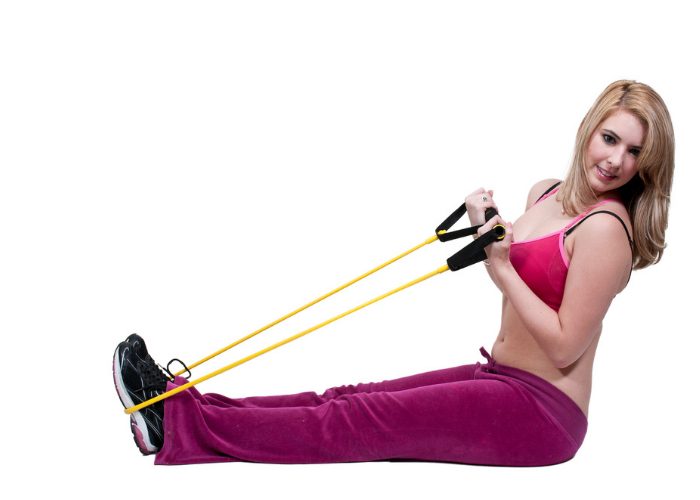
A sprained ankle is one of the most infuriating gym injuries! When you hurt this area of your body, it can seriously affect your training routine. Thankfully, there are some exercises you can do that will help you to speed up your recovery and regain your strength. Here’s what you need to know and how you can get started.
Resistance Stretch
- Repetitions: 1 set (3 per set)
- Time: 2 minutes
How to do it
For this particular exercise, you will need either a towel or a resistance band to help you along the way. Sit down with your injured leg stretched forward and your other knee bent. Hook either the band or the towel under the arch of your foot and hold the ends of it with each hand. Gently pull each end at the same time so that you get some resistance. Hold for 10 seconds and then release. You should repeat this exercise three times per set.
Pro Tip: The stronger you feel, the more you can ramp up the resistance here. Pay attention to how your body responds to the exercise and go with what feels the most comfortable. If you find that your gym injuries are not improving over time, you may need the help of a physiotherapist.
Motion exercises
- Time: 5 minutes
How to do it
Another way in which you can improve the strength of your ankles after common gym injuries is to try motion exercises. For this one, you will need to sit on a chair with your legs bent at a 90-degree angle. Put a little pressure on the ankle that is injured. Next, move your knee from side to side and see how your ankle feels. Push yourself as far as you can without feeling any pain. Complete this activity for around five minutes each day during your recovery period.
Pro Tip: You may find that your doctor or medical professional gives you a list of exercises that you should do. This one, along with the resistance exercises, are merely the basics. You should ask for as much help as you feel you need from your doctor when you have your first consultation.
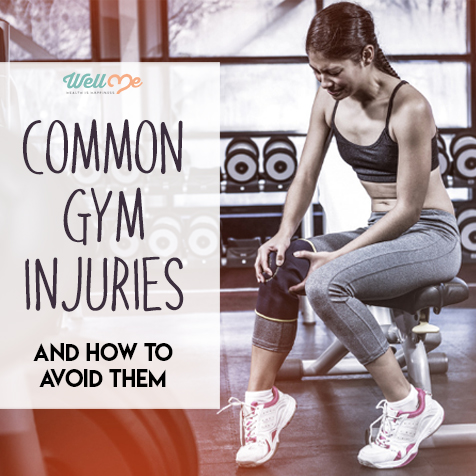
Conclusion
Having a gym injury (or two!) is a setback, but that doesn’t mean that it has to stop you in your tracks. In the period after the injury, you need to do all that you can to make sure that you recover as quickly and as easily as possible. After reading this informative guide, make sure that you work closely with a medical or fitness professional. They ought to give you the many tools that you need to aid your recovery and get back to the peak of health.
References
- [1] https://www.newswise.com/articles/the-differences-between-a-sprain-strain-and-tear
- [2] https://www.newswise.com/articles/the-differences-between-a-sprain-strain-and-tear
- [3] Texas A&M University. https://www.newswise.com/articles/the-differences-between-a-sprain-strain-and-tear
- [4] https://www.newswise.com/articles/the-differences-between-a-sprain-strain-and-tear
- [5] NHS. https://www.nhs.uk/conditions/dislocated-shoulder
- [6] https://www.nhs.uk/conditions/dislocated-shoulder
- [7] https://www.nhs.uk/conditions/dislocated-shoulder
- [8] American Academy of Orthopaedic Surgeons. https://orthoinfo.aaos.org/en/diseases–conditions/fractures-broken-bones
- [9] https://orthoinfo.aaos.org/en/diseases–conditions/fractures-broken-bones
- [10] https://www.sciencedaily.com/releases/2010/03/100330115925.htm
- [11] https://www.nhs.uk/live-well/exercise/stretch-before-exercising
- [12] NHS. https://www.nhs.uk/live-well/exercise/stretch-before-exercising
- [13] https://www.nhs.uk/live-well/exercise/stretch-before-exercising
- [14] https://www.eurekalert.org/pub_releases/2000-03/CftA-Lopf-1503100.php
- [15] Frontiers in Physiology. https://www.frontiersin.org/articles/10.3389/fphys.2016.00233/full
- [16] https://www.health.harvard.edu/pain/avoid-workout-injuries
- [17] https://www.frontiersin.org/articles/10.3389/fphys.2016.00260/full
- [18] Harvard Health. https://www.health.harvard.edu/pain/avoid-workout-injuries
- [19] https://www.niams.nih.gov/health-topics/sports-injuries#tab-treatment
- [20] https://www.niams.nih.gov/health-topics/sports-injuries#tab-treatment








